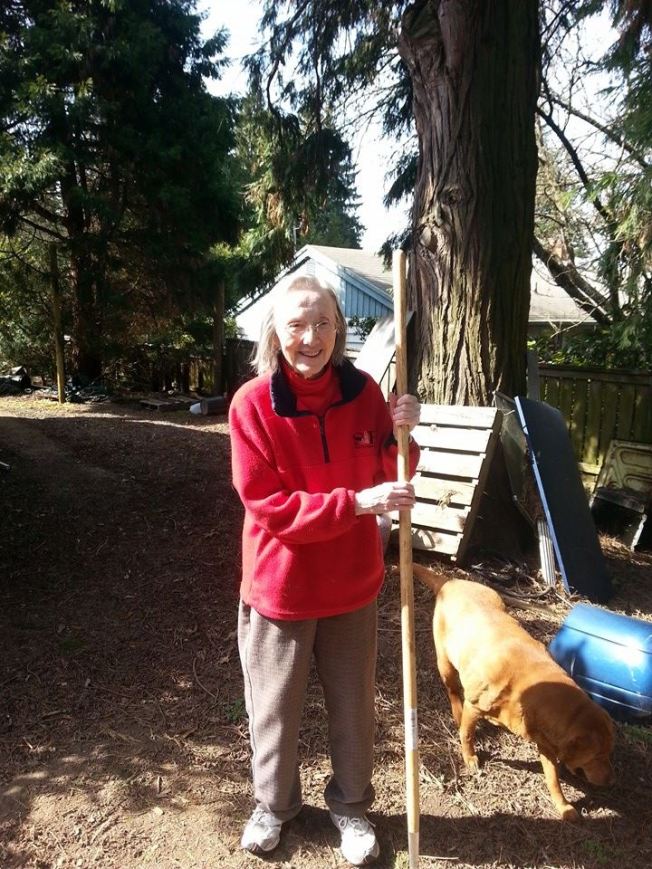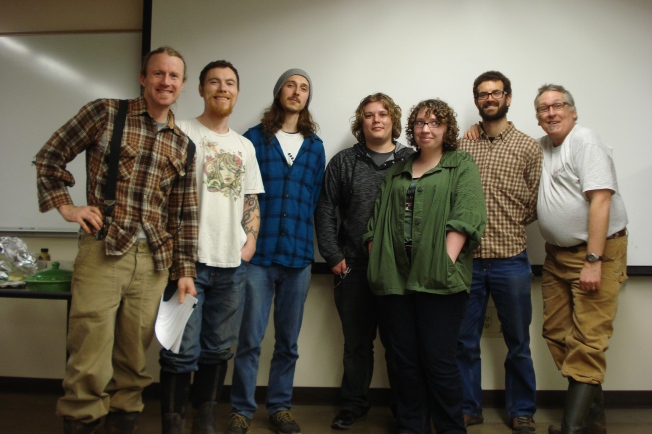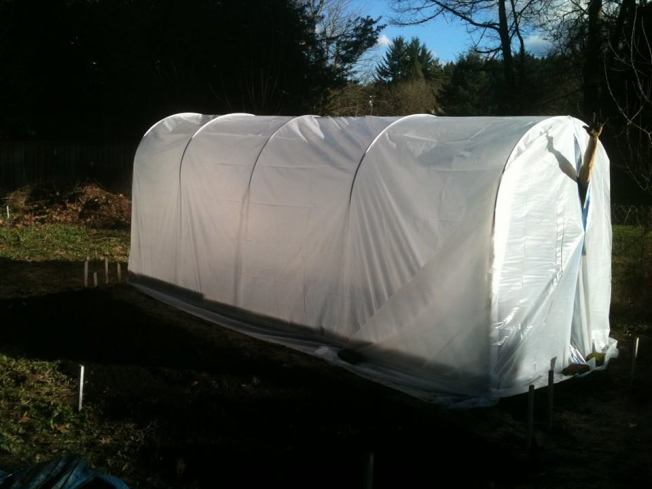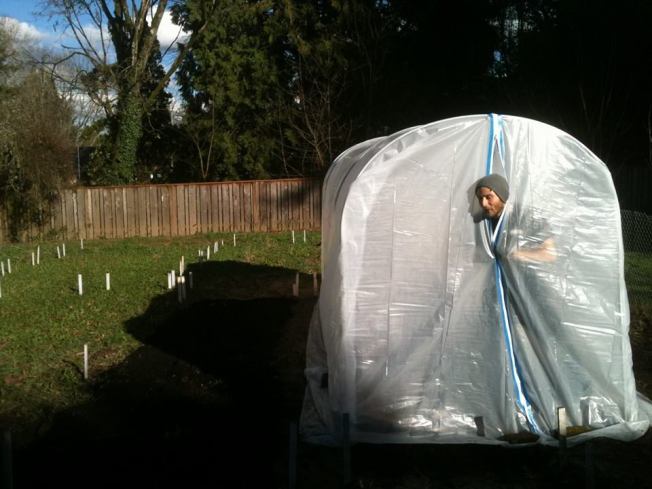 Here’s a great picture of Verna and her long time companion Daisy, who is lovingly regarded as a “flabadore” Daisy is half Lab and half Shar Pei . Verna is really happy to be helping us feed people in need, and wants to see the education component where school kids could come and learn how to grow food naturally! We are on our way to making that happen! Thank You Jim and Verna Terry for all your love and support!
Here’s a great picture of Verna and her long time companion Daisy, who is lovingly regarded as a “flabadore” Daisy is half Lab and half Shar Pei . Verna is really happy to be helping us feed people in need, and wants to see the education component where school kids could come and learn how to grow food naturally! We are on our way to making that happen! Thank You Jim and Verna Terry for all your love and support!
Monthly Archives: March 2014
Seed Genetics in Layman’s Terms: The reason apples don’t come true from seed
Hello GVGC subscribers and readers. I would first like to start off by saying how wonderful it is for my wife and I to have the opportunity to contribute to this blog and help with the many new and exciting things happening with GVGC.
As a brief introduction, my name is Eric Sellers, and my wife’s name is Kelsi. We have both been horticulture students at Clackamas Community College for 2 years, have both satisfied the requirements for the Associates of Applied Sciences Degree in horticulture, and have started our third year pursuing a Certificate of Urban Agriculture. Coincidentally, this is the program where we met Bob and began discussing our involvement with GVGC.
Now that the introductions are over, I can explain the reason for the long winded introduction. Bob has asked my wife and I to contribute articles and stories for this blog to better enlighten you, the readers, on what GVGC is doing, as well as some helpful information we have learned along the way through our Horticultural careers and education.
As my first order of business here, I would like to talk about seed genetics, and why most plants do not come true from seed. Bob specifically asked me to do a piece on this subject, because it is often hard to understand why it is things don’t come true to type from seed. Any simple search on Google will give you results from scholarly articles or complicated explanations on the subject, that are honestly more complicated than they should be. Basically, I am here to provide layman’s terms and explanations for somewhat complex ideas.
So first off, everyone knows the basics of genetics. They define how people look, the color of their hair, the color of their eyes, how tall they get, and so on. This is because of a person’s parents’ genetics matching up and creating a new set of genes. Since these new genes are based on the parent’s genetics, often-times the offspring will look similar to both parents. This is also true in that of plants.
People have been breeding plants for as long as farming has been around. This is because with the right amount of forethought, planning, and observation, you could make the perfect plant for your area.
Onto why it is a seed will often not come true to type. The example Bob keeps mentioning, as well as many other people, is apples. Apples, like many in the rosaceae family (the rose family) are easily cross pollinated. That is, in the words of Linda Beutler (a part time instructor at CCC as well as the curator at the Rogerson Clematis Collection), “they are very promiscuous.” That is to say, they breed readily, often whether you want them to or not.
Much like your parents came together to make your genes, they could have easily gone on to make someone else’s genes that is totally different from you. Whether from the same parents, or different parents. For this, many people use the punnett square to show the relationship of the genetics, and how they can differ, even within the offspring of the same parents. As your parents pass on their genes to you, you are then created with a series of genetics of dominant and recessive traits. It is from these that you get your physical appearance.
Punnette Square (click to view)
It is the same for an apple. Especially so even. The punnett square above shows the relationships of two similar genes, the “A” being the dominant and the “a” being recessive. Both parents are made up of “Aa”, but when crossed there’s a 25% chance that the offspring could be either “AA” or “aa”. While there might be a 50% chance the offspring will be the same in the example of the punnett square. Imagine now that there are thousands of more series of letters and number annotating different dominate and recessive traits. The chances of the offspring being the same as two similar parents no longer seems so likely.
One might then ask, “why not just breed the same plants together?” While that has been done with many plant species over the years to obtain highly productive plants, the problem with doing this practice on apples is that the same plant of the same genetics cannot pollinate itself. That is why you need at least one other apple variety within a mile of the producing apple trees, otherwise they will not fruit. If you don’t get any fruit, you won’t have any seeds.
In further layman’s terms, you need two parents of different genetics to get an apple with viable seeds. Because these parents have different genetics, the offspring will bear different traits. So in the end, an apple will not come true from seed, and often will not produce a tree that will produce an edible fruit at all.
This isn’t to say of course that growing seeds on from apples is a bad thing. To get new varieties, plant breeders have had to grow apple seedlings, and select the ones with desired qualities, and further breed subsequent generations to strengthen those traits. Breeding takes many generations for plant breeding programs to attain a good quality apple tree, because it takes 3-5 years to get the first fruit crop on an apple seedling. This makes it especially difficult to breed good apple trees, and thus isn’t usually a hobby taken on by home gardeners.
If you have any questions, feel free to post a comment, and I can answer them to the best of my knowledge. I hope this short article has helped with understanding some things about seed saving. I look forward to any comments, constructive criticism, and perhaps even doing a piece on saving seeds from other kinds of plants.
Change and Growing is a Good Thing
You know when we started GVGC we agreed that keeping the needs of the people ‘in need’ would always have to drive what we are doing, and it’s really a good feeling when that happens! We have now shifted into another gear by not just growing non GMO foods, but actually growing food demographically according to what each of the three pantries are needing. We found that there is still a lot of waste from pantries, and that waste was types of vegetables and food that was unfamiliar because of nationality. We know that people have great intentions by donating what they have left in their gardens, and by all means should continue, but maybe we as a community should put more thought into where we take that food? We found by doing just a little research that some pantries are in neighborhoods where more elderly of a European descent, while other pantries are more Hispanic, or Russian descent. What we have decided is to grow food to cater to the pantries we are involved with, and the response we were given was a feeling of incredible joy, in fact they had never heard of such a thing and can’t wait to get their first supply of Fresh naturally grown food. Two other components we will add, is for us as a team that grow the food to actually know and meet the people that will get it, so they too can feel connected to the food, getting to know the people that are actually eating the food you grow is really important, and one of the reasons why is because if we can engage the people in need then perhaps we can teach them how to grow their own food with our help. We could get garden spots in their area, even container type gardening and show the ones that are able to garden how to be sustainable, feed their families and teach their neighbors what they have learned!
Thank You to everyone who in support of what we are doing!
Cheers and God Bless
Bob and GVGC
Introductions, please!
The New Hoop at the Terry Site
We are so fortunate to have such a caring team. Jason and Art have really been putting in the hours at the Terry garden site. We are hoping that along with our other sites that this season will be one to remember. Donating this food we grow to families in need is what it’s all about, and along with the education component it really makes our efforts feel complete! Feeling really excited and hopeful for what the Lord has in store for us! Our first 20 footer!
Cheers and God Bless
Bob Dinges
Beaverton Hoop

Site manager Jason with our new addition to the family, Art, getting the small hoop up at the Terry Site so we can begin our planting. The start of the ‘A’ team!


